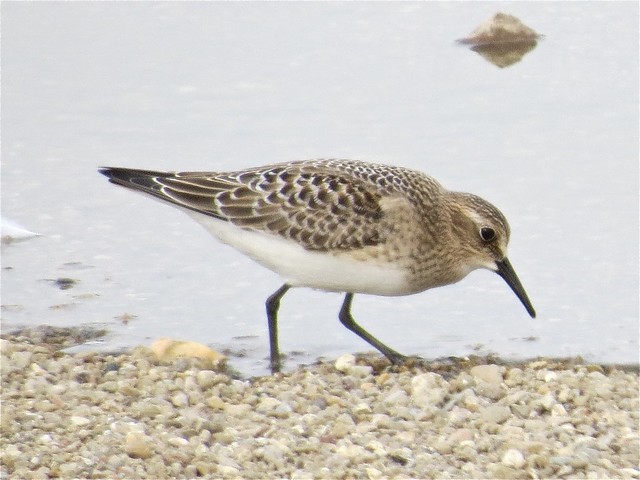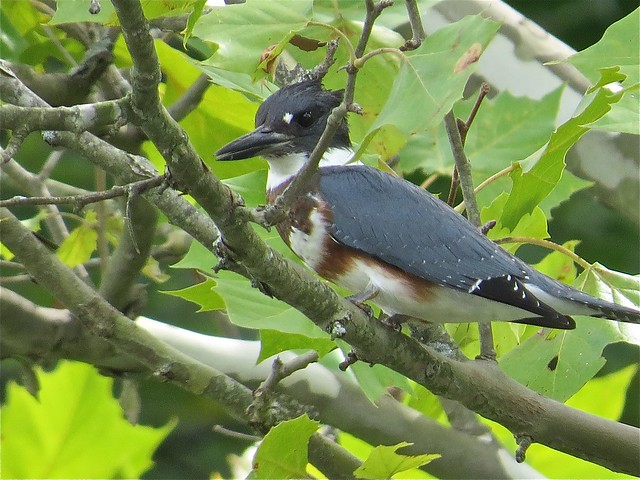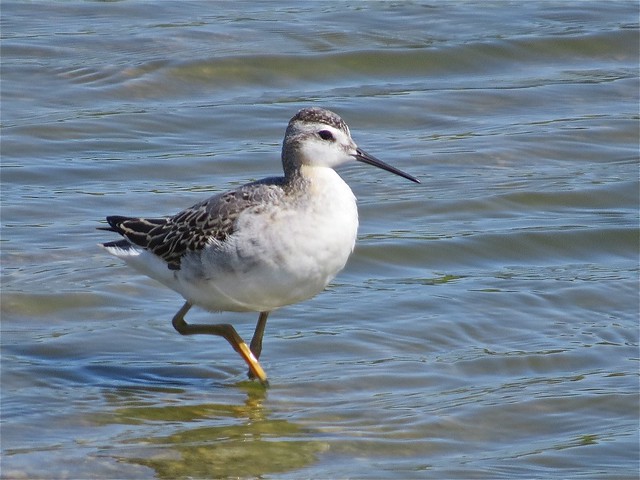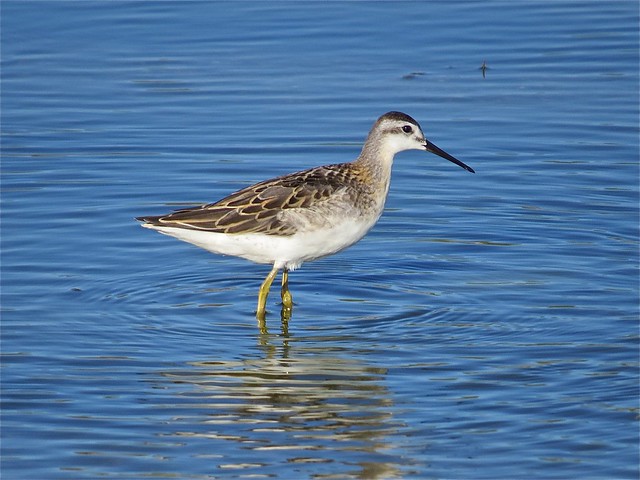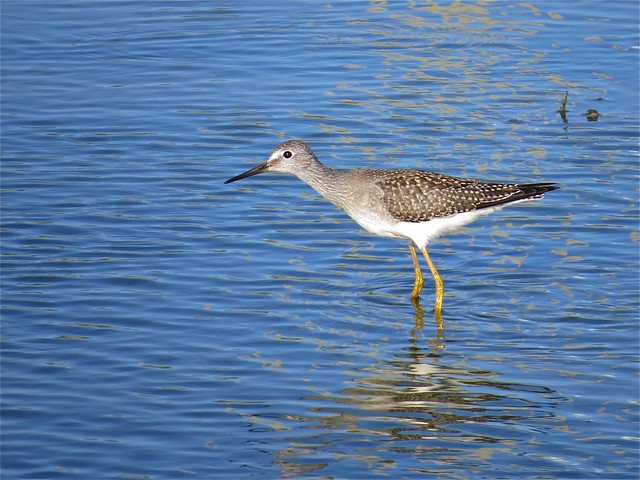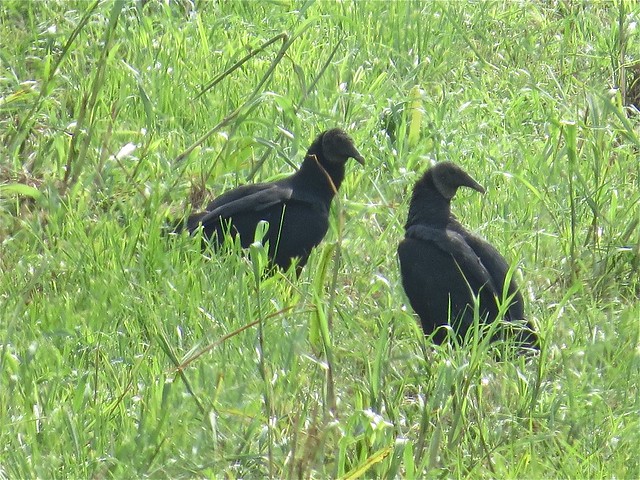
In celebration of my 40th birthday, Carrie and I took a weekend trip to Southern Illinois. We had never birded in Southern Illinois, and there are several birds that for the most part can only be found in the Southern part of the state, including Fish Crow, Black Vulture, Least Tern, Chuck-will's-widow, and Barn Owl. These were our primary targets for the trip, but there were some other birds we hoped to see, including Snowy Egret and Little Blue Heron. We had both seen Fish Crow, Black Vulture, and Least Tern in Florida. We had also seen Black Vultures in North Carolina. However, I wanted to add these birds to my Illinois state list. Neither of us had ever seen or heard a Chuck-will's-widow, or a Barn Owl. We hoped to hear a Chuck-will's-widow and see a Barn Owl in it's nest box.
On my birthday on August 7th, we left home after work and drove to Marion, IL, where we stayed in the Comfort Inn & Suites. The next morning after having breakfast in the hotel, we decided to try the Barn Owl box in Johnson County first. After hearing and seeing a Northern Mockingbird in the hotel parking lot, we made our way South toward the Barn Owl location, which had been posted on ebird.
We were driving toward the location on Highway 37 when we saw several vultures on utility poles on the right side of the road. One of them appeared to have a black head so we pulled over and put the spotting scope on the bird.

It was indeed a Black Vulture--our first in Illinois!


Also, at this stop, we heard Yellow-billed Cuckoo, Indigo Bunting, Tufted Titmouse, Field Sparrow, and Carolina Chickadee. Carolina Chickadee is also a Southern specialty; although, it can also be found in the Eastern most counties of Central Illinois. Carolina Chickadee was a state bird for Carrie, but I had previously seen and heard them in Vermilion County in 2014. For a moment, I thought I heard and saw a Blue Grosbeak in the scope while watching the Black Vulture, but I was not absolutely sure that it was not an Indigo Bunting.
As we continued driving we saw a Red-headed Woodpecker fly across W Eden Rd. Also on this road, I heard a definite Blue Grosbeak, which we stopped to see. We were both able to get great looks at this bird through the scope.

This was only the second Blue Grosbeak Carrie had seen and was by far, the best look she had gotten of this magnificent species. Shortly after seeing the grosbeak, we arrived at the location of the Barn Owl nest box.

I know it is controversial to share a Barn Owl's location online and that the persons who shared the location received some flack or criticism for doing so, but the nest box was way out in the field from the road, and it could not be easily approached because of the tall prairie growth between the road and the box. The grass was almost as tall as me, and full of ticks and prickly plants. I can't see anyone being foolish enough to attempt a closer approach. The only way to see the owls was from the road with a spotting scope. The owls never popped their heads out of the hole while we were looking, but we were actually able to see them inside the hole when we looked through the scope. The owlets were moving around in the box when we arrived, probably preening or eating. Then just before we left, we saw the unmistakable heart-shaped, pale face and dark eyes of one of the adults. Wow! I had not hoped to see a Barn Owl until seeing the posts on ebird beginning just a couple of days before our trip. What an amazing lifer for both of us! And the owls did not seem at all disturbed inside their box. It was not even 9:00 a.m., and we had already seen two of our targets without a hitch.
While we were watching the Barn Owls, we heard two Henslow's Sparrows singing in the field. We also heard the more expected songs of Indigo Bunting, Field Sparrow. Not far down the road after we got back in our car, Carrie spotted a Belted Kingfisher in a creek, and we had Mississippi Kite fly over. We also heard Eastern Wood-pewee and Eastern Towhee by the creek. Then we saw three more Black Vultures on the side of the road feeding on a carcass just a couple of miles from the site of the nest box.
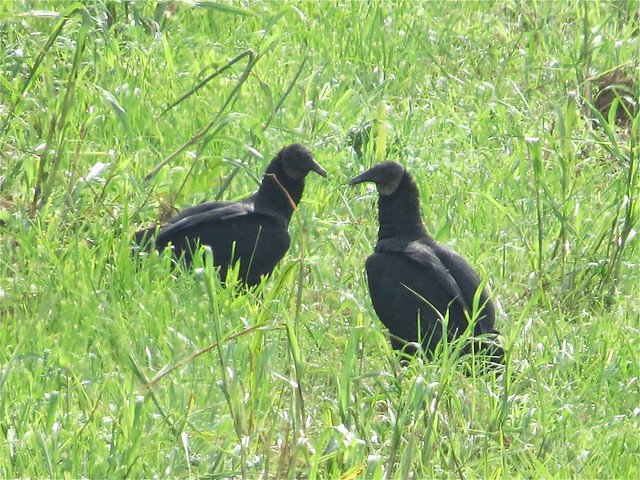
Our next target was Least Tern in Alexander County, but we hoped to see and hear some Fish Crows on our way to the flooded fields where large numbers of Least Terns had recently been seen. In Olive Branch, we stopped to watch a pair of Mississippi Kites flying over head.


Mississippi Kite is another species much more commonly found in Southern Illinois than in other parts of the state. Last summer Carrie and I drove up to Rockford to see a pair that have nested there for several years, but it is unusual for these small raptors to nest that far North. Mississippi Kites are occasionally seen at Ewing Park in McLean County during migration, but I am not aware of any record of them actually nesting in our county.
On our way to the location for the Least Terns that had been posted on ebird.com, we saw a huge fluddle along Miller City Rd. As we drove off the main road to check out the flooded field for birds, Carrie noticed a dead Mink on the road. We continued to the road in the middle of two flooded fields. As we were scoping Killdeers and a Spotted Sandpiper, we saw a Least Tern fishing. We both got great looks as it flew back and forth over the water. Eventually it landed, and I was able to get a recognizable photo.
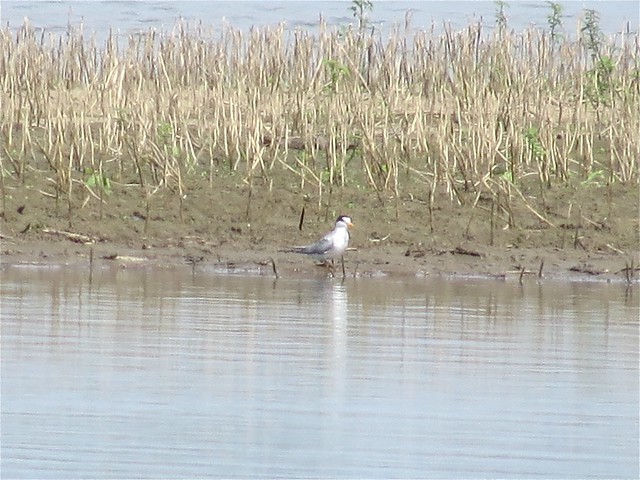
Three targets down and only two to go! We still wanted to go to the other location were the Least Terns had been reported hoping to see larger numbers of Least Terns, shorebirds, waders, and Fish Crows, but first Carrie wanted to get a better look at the Mink.
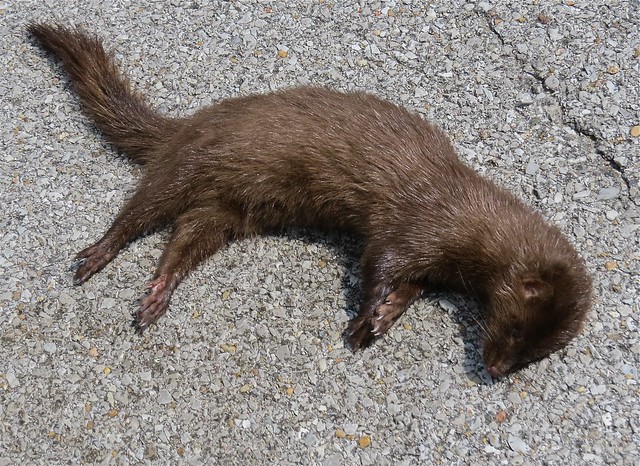
It looked freshly killed. I thought it would make a good specimen for my friend Dr. Angelo Capparella, the Associate Professor of Zoology and Curator of Vertebrates at Illinois State University. So I bagged the Mink and put it in the trunk. Although we continued to look for Fish Crows, we did not see or hear any crows.
When we got to Central Bend Road, there were several fluddles along this road and the adjoining road. We spent a good amount of time scoping the fluddles, but the best shorebirds we saw other than Killdeers were Pectoral, Solitary, Spotted, and Least Sandpipers, and the only waders we had were Great Egrets and Great Blue Herons.


In the first fluddle we had no Least Terns, but as we continued going from fluddle to fluddle we found a total of 10 Least Terns, which was nowhere near the over 100 that had been observed in the area a week earlier, but I was still happy to see these birds and get this species on my state list.

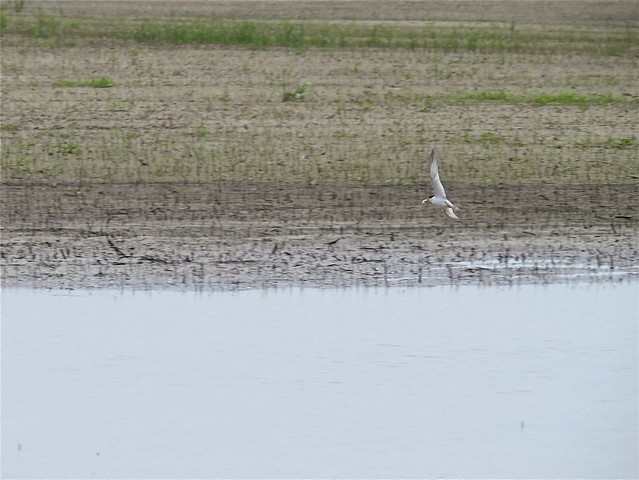
We still could not find any Fish Crows, but we did find over 300 Bank Swallows perched on a power line. This was especially exciting because Carrie had never seen a Bank Swallow before. Any lifer is great, but it's particularly nice to see over 300 individuals the first time you see a new species.


Enormous flies were everywhere in Southern Illinois, and we had a difficult time keeping them out of the car.

As we were scoping birds in the hot sun often with the trunk open so we could get the scope out, Carrie began to complain about the Mink smelling up the car. At first I did not notice the smell, but as we drove North toward Jackson County to check out some more flooded fields for waders, I became more and more aware of the foul musky odor wafting in from the trunk. We stopped at a gas station looking for a cooler to put the Mink in, but they did no sell coolers. We went ahead and bought a bag of ice and put the ice in the bag with the Mink hoping that keeping it cool would curtail the stench. However, after this proved ineffective, we decided to throw the Mink out of the car. I was sure that Angelo would understand why I could not keep the Mink until we returned to Normal the next day. To our relief, once the Mink was gone, the odor disappeared with it.
Alongside the Mississippi River, we stopped to watch these crows while we ate our lunch, but they never called so it was impossible to tell whether they were American Crows or Fish Crows.

Next we stopped at a fluddle on Elliot Rd., where Ted Hartzler had reported seeing Snowy Egret and Little Blue Heron. Almost immediately, we noticed a pair of Black-necked Stilts.
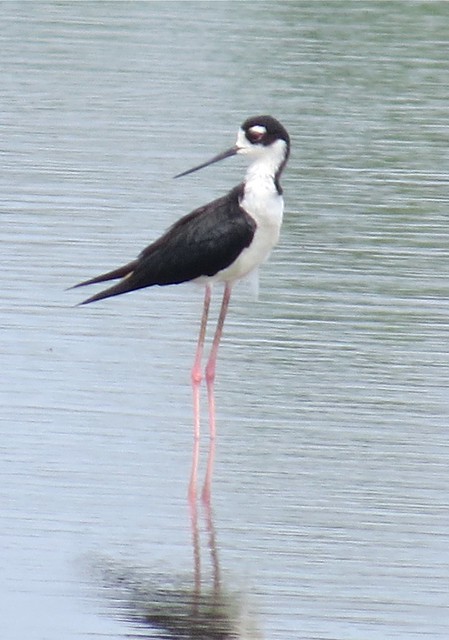


In the fluddle on the adjoining road, we found both Little Blue Heron and Snowy Egret amongst the Great Egrets and Great Blue Herons. Here is one of the two Little Blue Herons.

The bird on the left in the photo below is one of the two Snowy Egrets. You most easily identify this bird by it's yellow feet contrasting with its black legs.

Our next and final stop for the day was Oakwood Bottoms, where we saw a Summer Tanager and heard a Pileated Woodpecker. We also heard a White-eyed Vireo, which would have been a lifer for Carrie, but we never got a good look at it. We took a short hike and heard a couple of Acadian Flycatchers. Since it is difficult to see this bird and since it is easier to identify this bird by hearing it than by seeing it, Carrie counted this bird as a lifer though we did not see it. I have only seen and heard this species at the same time once. Usually I only hear them. I cannot identify them by sight because they are too similar to other Empidonax flycatchers such as Least, Alder, Willow, and even Yellow-bellied.
Also, while we were driving around at Oakwood Bottoms, we saw this Water Moccasin crawling across the road.

This was a good reminder to be careful in this part of the state and stay on the trails because there are poisonous snakes in Southern Illinois.
We had a nice dinner that evening near the hotel. Then we drove to Fern Clyffe State Park, hoping to hear a Chuck-will's-widow where Rich and Marion Miller had seen one earlier in the year. We waited until it got dark and drove around a bit, but we did not hear the bird.
The next morning we spent a good amount of time at Crab Orchard National Wildlife Refuge hoping to find a Fish Crow. Although we saw another Blue Grosbeak, heard a third Blue Grosbeak, and heard two Sedge Wrens, and a Wood Thrush, we found no Fish Crows. This was our last stop before returning to Normal. So we missed Fish Crow and Chuck-will's-widow, but we got Barn Owl, Black Vulture, Least Tern, Snowy Egret, Little Blue Heron, Blue Grosbeak, and many other amazing birds. Barn Owl was a lifer for us both, and Carrie also added Acadian Flycatcher and Bank Swallow to her life list. All in all, our trip to Southern Illinois was a great birding experience!










